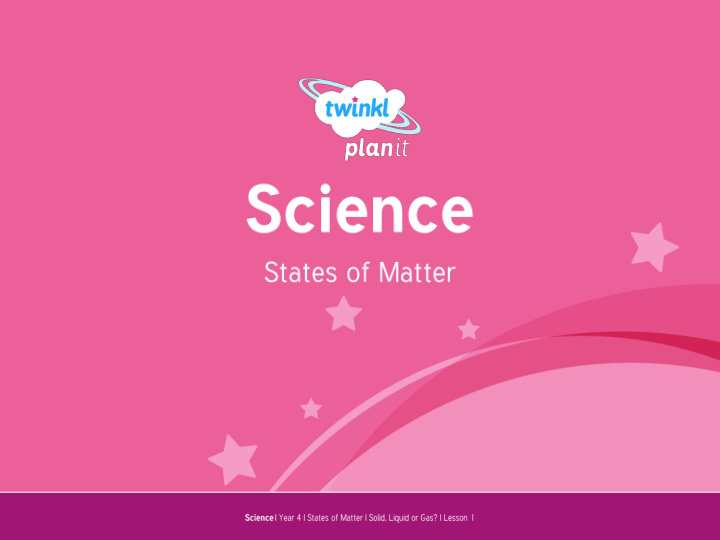



Aim • I can sort and describe materials. Success Criteria • I can sort materials into solids, liquids or gases. • I can describe the properties of solids, liquids and gases. • I can show the difference between the particles in solids, liquids and gases.
Sorting Materials A material may be in one of three states: solid, liquid or gas. Can you sort the materials into solids, liquids or gases? Think carefully about each one.
Properties of Materials: Solids These items are Materials in a solid state keep their shape unless a all solids! force is applied to them. What do they Solids can be cut, squashed or twisted. They will have in not change shape on their own. common? Solid materials always take up the same amount of Share the space. They do not spread out or flow. Solids do not adjectives you have to be hard. They can be squashy or soft. thought of.
Properties of Materials: Liquids Materials in a liquid state take the shape of the These items are container they are in. all liquids! Although liquids can change shape, they do not What do they change their volume. This means they still take have in up the same amount of space. common? Liquids are pulled down to the bottom of a Share the container by gravity. adjectives you thought of. Liquids can flow or be poured.
Properties of Materials: Gases These items are Materials in a gaseous state can spread out to all gases! completely fill the container or room they are in. What do they Gases have weight. have in common? Gases can be squashed. Share the adjectives you Gases do not keep their shape. thought of.
Properties of Materials Can you match the properties with the correct state? Talk to your partner to help you. gas solid liquid Spreads out to Can be cut, Keeps its shape. fill a space. squashed or torn. Takes the shape of the Does not have Can be poured. container it is in. any fixed shape.
Particles We can explain the differences between solids, liquids and gases by knowing what they are made of. Scientists have found out that all materials are made of very tiny particles. These particles are so small that we cannot see them with our eyes, or even with a microscope! The position and behaviour of Click the particles is different in here to solids, liquids and gases. find out more!
Particles and Properties You are going to work as groups to demonstrate the differences in each state! Follow the instructions on your group’s Particle Information Card to find out what you need to do. Then watch each others’ demonstrations to learn about the behaviour of particles in solids, liquids and gases.
Particles and Properties Now you have watched the demonstrations, have a look at the information boxes on your Particles and Properties Activity Sheet. Can you work out which diagram and explanation goes with each state?
Spotting States of Matter Watch this short film containing clips of different solids, liquids and gases. See which materials you can spot, and which states of matter they are. Share your ideas with the rest of the class.
Aim • I can sort and describe materials. Success Criteria • I can sort materials into solids, liquids or gases. • I can describe the properties of solids, liquids and gases. • I can show the difference between the particles in solids, liquids and gases.
Recommend
More recommend